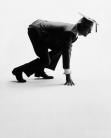Compound Personal Pronouns
Compound Personal Pronouns :
The three compound personal pronouns are made by adding the word SELF to certain forms of the personal pronouns. Thus….
myself and ourselves (plural)
thyself or yourself and yourselves (plural)
himself, herself, itself and themselves (plural)
To these may be added the indefinite oneself, more commonly written as two words, one’s self.
Observe that YOURSELF is singular and YOURSELVES is plural. HISSELF and THEIRSELVES are incorrect forms. OURSELF (not ourselves) is the compound pronoun corresponding to the royal WE.
What touches us OURSELF shall be last served. – Shakespeare
1. The compound personal pronouns may be used to emphasize substantives.
In this use they are called intensive pronouns .
1. I myself will go.
2. King Alfred himself took the field.
3. They did the work themselves.
An intensive pronoun is in apposition with the substantive to which it refers.
2. The compound personal pronouns may be used as the objects of transitive verbs or of prepositions when the object denotes the same person or thing as the subject.
In this use they are called reflexive pronouns .
1. I have hurt myself.
2. King Alfred interested himself in his subjects.
3. These schemers deceived themselves.
4. Mary was talking to herself.
5. He gave himself a holiday. [Indirect object.]
These pronouns are called reflexive (that is, “bending back") because they refer back to the subject and repeat its meaning in an object construction.
Note : A reflexive pronoun sometimes refers to a substantive in the objective case such as….Our captors left us to ourselves.
In older English the simple personal pronouns me, thee, etc., were often used reflexively such as...
1. I held me [= myself] still.
2. Yield thee [= thyself] captive.
3. They built them [= for themselves] houses.
This idiom survives in colloquial language (as, “I have hurt me," “I have bought me a rifle"), but it is avoided in writing except in a few expressions such as….
1. I must look about me.
2. We gazed about us.
3. Look behind you.
3. The adjective own is sometimes inserted between the first and the second part of the self-pronouns for emphasis.
Examples :
1. my own self
2. your own self
3. his own self
4. our own selves
5. their own selves
In this use, SELF is in strictness a noun limited by the possessive and by the adjective own. But the phrases may be regarded as compound pronouns. Other adjectives are sometimes inserted between the possessive and SELF such as…my very self, his worthless self.
4. The intensive pronouns are sometimes used without a substantive. Thus…
1. It is myself. [Myself = I myself.]
2. You are hardly yourself to-day.
In poetry and older English, the intensives are even found as subjects such as….Ourself will mingle with society (Macbeth).
5. The intensive pronouns should not be used as simple personal pronouns.
Thus we should say….
1. He was kind to Mary and me (NOT myself).
2. They invited my wife and me (NOT myself).
Compound Personal Pronouns :
Compound Personal Pronouns To HOME PAGE
